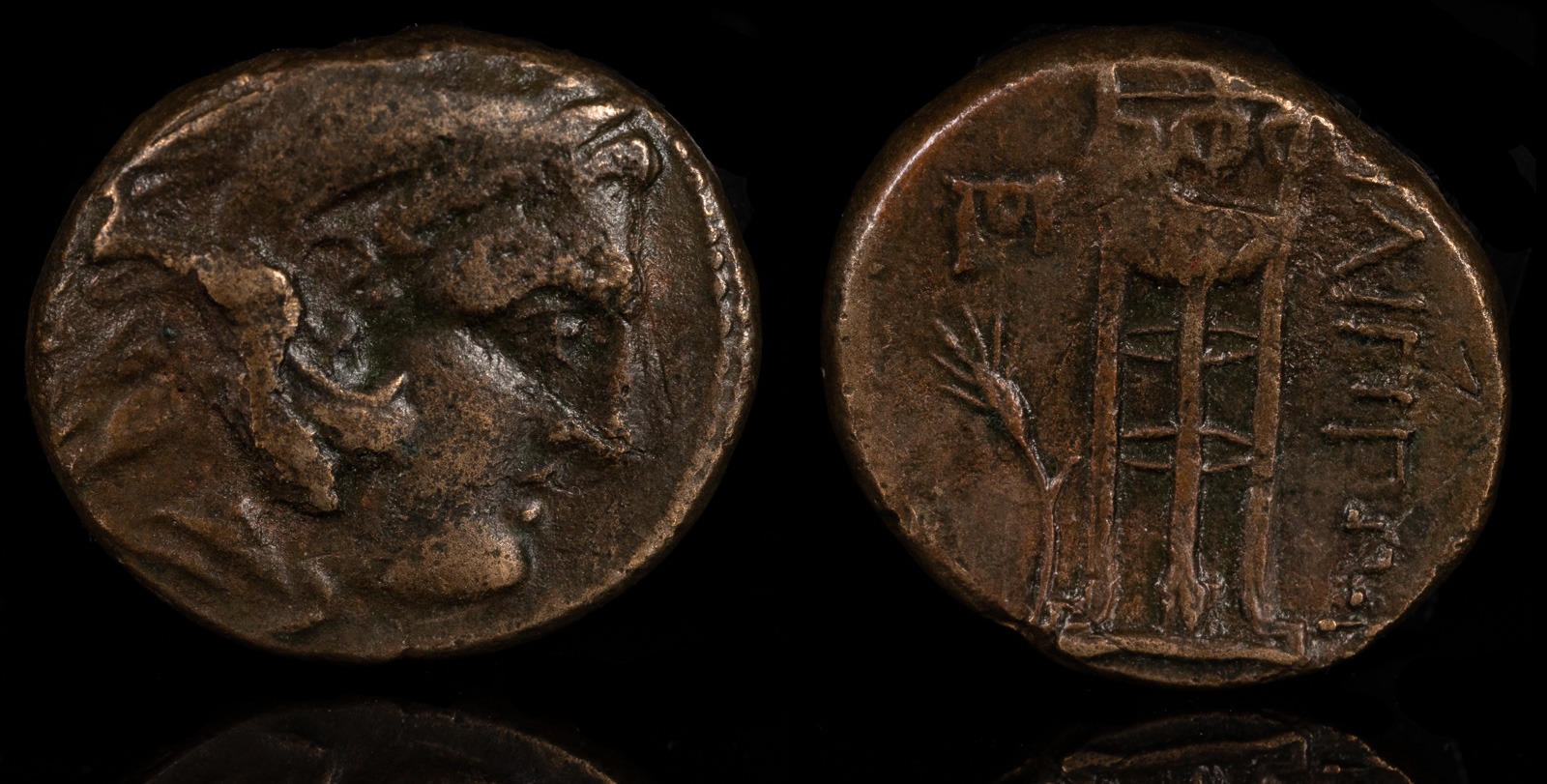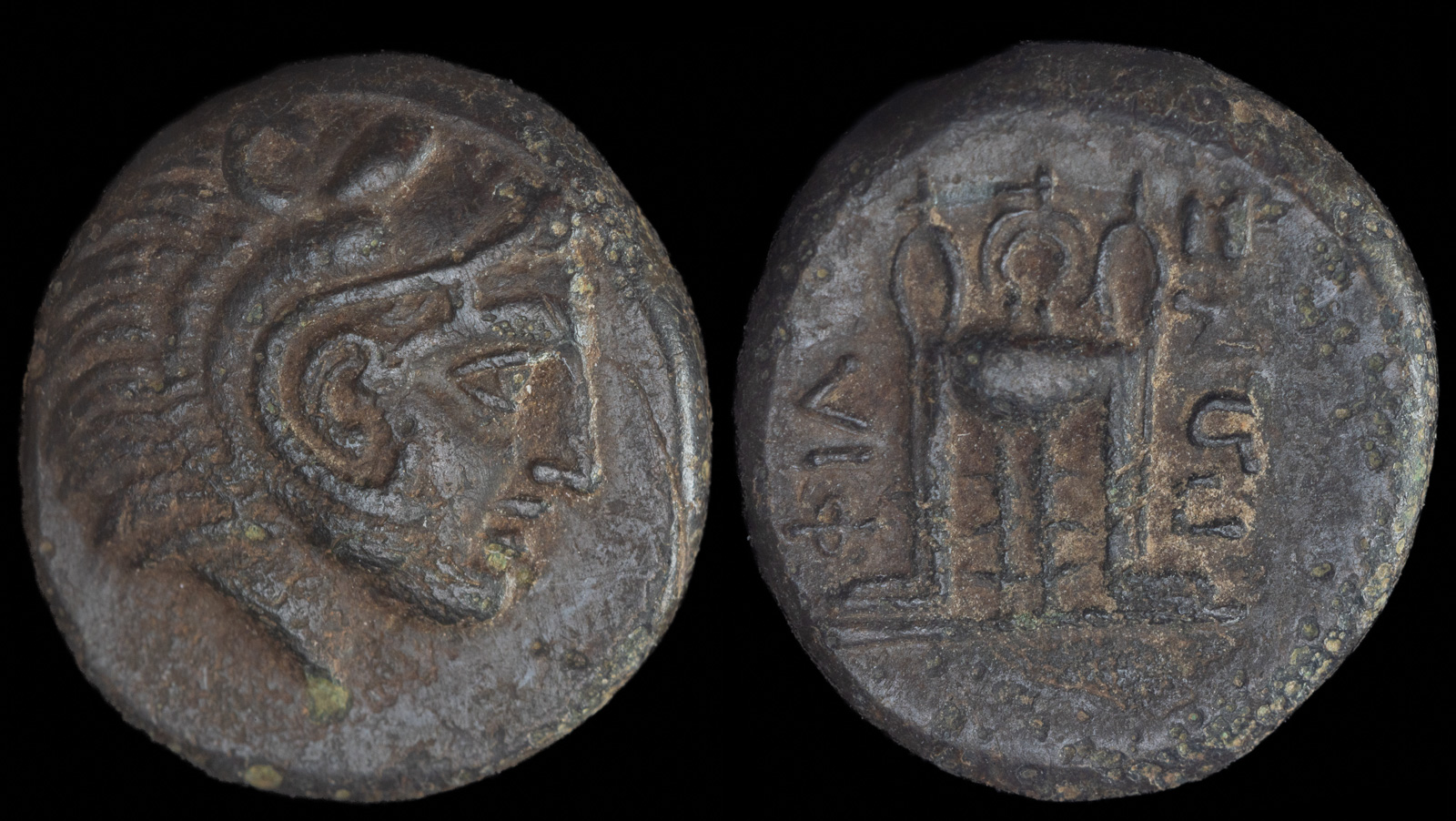
Macedon, Philippoi
c. 356-345 BCE
AE 18mm, 5.70g, 11h
Head of Herakles r., wearing lion’s skin. R/ Tripod; to l., monogram above grain ear.
SNG ANS 666; BMC 11
While only recently have I started to add cities in addition to rulers, Philippi was one of my few early exceptions. This city, originally called Krenides, was of enormous importance to Philip II when he conquered in in 356 BCE.
The major reason was the mines, and they weren’t just normal mines – but gold mines. Philippi was what enabled Philip (who conveniently renamed it after himself) to mint his famous gold staters. You won’t see one of those on this site because I can’t afford them.
However, I was able to afford this nice bronze from Philippi. Philip II treated the city with major importance, and drained a marsh and performed other works for one of his central cities, conquered even before Amphipolis.

Macedon, Philippi
ca 356-345 BCE
Æ 10,6mm, 1.7g
Head of young Herakles right, wearing lion skin
R/ Tripod ΦΙΛΙΠΠΩΝ around
Cf. SNG ANS 668-671
Interestingly, both coins depicts Herakles, who would later grace the famous coins of Alexander the Great. The other side of the Philippi coin depicts a tripod, which is basically what the ancients used when they couldn’t think of something else. They were chairs on which priests would sit, and were not only common and sacred, but also easy to engrave. The Thasian Epeiros coin depicts a club and is similar to the bronze coinage Alexander would later issue.
The city itself had three names. Before 360 BCE, it was known as Krenides. Settlers from Thasos then created a settlement and named it Thasian Epeiros. Coins from that time are rare and I was lucky to obtain my example. Finally, after Philip II took it, the city was renamed to Philippi.
The ruins of the city are now a tourist attraction.
Philippi founded by settlers from Thasos and named Thasian Epeiros.
Philip II occupies Krenides and renames it to Philippi.
The harbor of Neapolis is used by Brutus and Cassius before the Battle of Philippi.
October 23
Octavian and Mark Antony defeat Brutus and Cassius at the Battle of Philippi in Greece, effectively ending the resistance of Caesar’s assassins.
Philippi is renamed to Colonia Iulia Philippensis by Augustus.